
There are certain things Berlin can’t live without. Scaffolding, towering windowless walls, vacant lots and broad horizons, the cumulative void of an incomplete city. As it waits patiently to fill with promises of ongoing development, this void serves as an immense playground for the city’s playful. From the intentional: spray paint covering Berlin’s surface, street art affixed to its body, and the relentless removal of both, to the unintentional: absurd urban planning and neglected decay, Urban Art Photography documents each as a distinctive artwork.
The process of continuous urban transformation becomes evident as forces natural and manmade alter each work. Buildings erect, paper rips, colors fade, statements attract more statements, and so the art becomes fleeting, never finished, like Berlin itself. Editor and photographer Jurgen Grosse has worked with Michael Bonk for years to record and archive urban art in its inevitable dialogue with Berlin.
Urban Art Photography presents a spectacular selection of art and its adventures in a golden age of a city’s formation. Each piece is photographed with care and attention in regard to its context and each photograph finds its own context in this large-sized book. As Berlin materializes into its projected vision, its urban art, impulsive and transient, finds a permanent home in this comprehensive collection.
Text: Polina Soloveichik
Language: Bilingual, German/English
Published by urban art info, Berlin 2008
216 pages, full color, 29,5 x 32 cm, hardcover
Distribution: Die Gestalten Verlag
25,00 EUR
Artist: Jürgen Große
Exhibition: Urban Art Photography
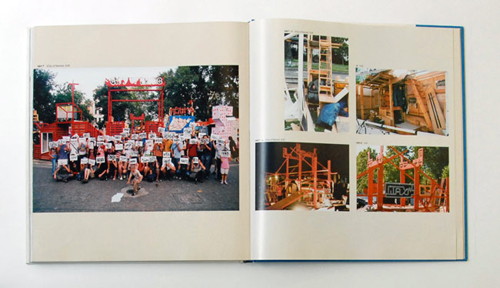
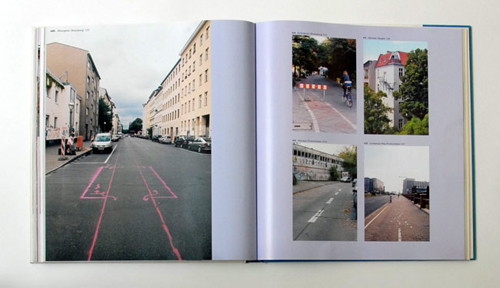
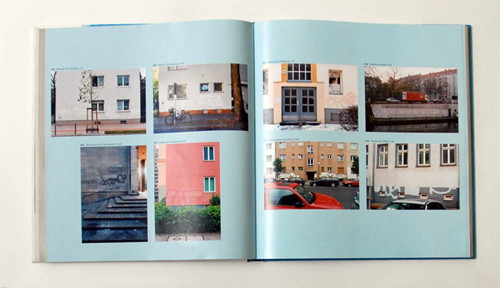
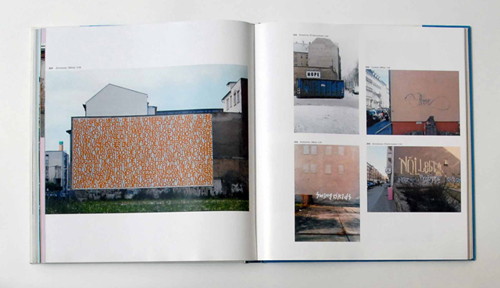
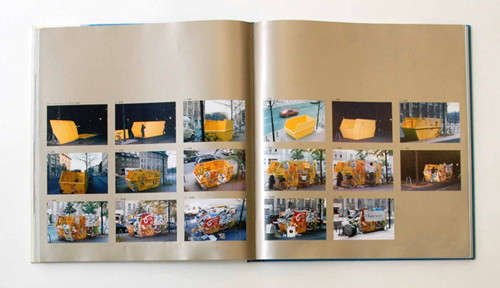
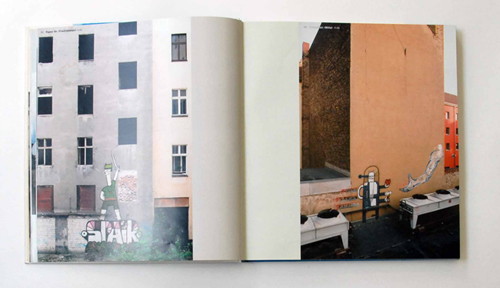
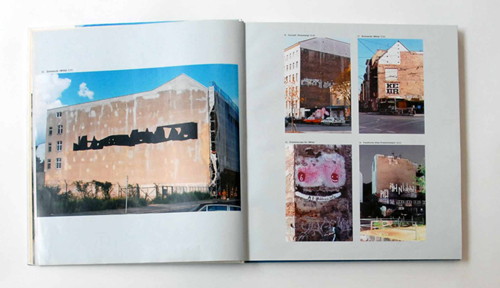
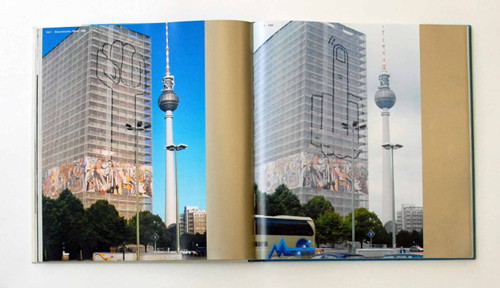
Comments
Download different artists' statements on the pictorial material (only in German):
Thomas Bratzke - Der Unverschlinger
Jan Danebod - Berlin über alles!
Irati - Schnappschüsse aus dem Tagebuch
Kevin Kemter & Max Stocklosa
Markus Mai - Kleine Verse über Städte
SP-38 - Berlin art urbain : Berlin urbane Kunst
Matthias Wermke - Das sind alles „Zeichen“
Interview
The following conversation is a montage from conversations between Jürgen Große and Michael Bonk that took place between 11 and 14 November 2007, shortly before the book Urban Art Photography went to print.
Why use the title «URBAN ART PHOTOGRAPHY» when you‘re insisting that it‘s really not about photography?
Well, it‘s also about photography, but that‘s only the last link in the chain. I don‘t even know if I‘d go out without a camera any more these days. It‘s also about capturing things. But actually it‘s about freedom, the feeling of being on the road. Walking down streets, courtyards and open spaces, entering empty houses and abandoned construction sites. And it‘s about the feeling I get when I discover something that I like, something that surprises me or irritates me. You wouldn‘t believe how overjoyed I am when I find something like the shoes.
Ultimately, the pictures also serve as reminders of what I see every day and they make new connections that I might not have recognized before. I also like to take older photos from the archive if there‘s time. Just about half my life is contained in these archive boxes.
When we started working on the book, I thought of your movement through the city as being much more random, not at all as systematic as it often really is.
I note down those places that I want to observe over a longer period of time, and I head there on purpose. But I‘m just as likely to keep on looking for new streets and follow other paths. A lot of my discoveries are accidental, and even my intentional actions often lead to something new for me. Of course you always hope to discover something new, but I am not disappointed if I don’t find anything, or if nothing inspires me.
The real reason to go out is just to go out. I used to take off with the goal of photographing specific works; first I photographed works done on the Berlin Wall. That‘s how it all started. Today I‘m not only documenting art, but also contexts – and increasingly series, some of which I then pursue over years, like the corner series. These days I am even playing with the idea of extending some works myself.
Do you have any personal favourites?
Not really. My taste runs from the figurative to the abstract, from conceptual art and works where the process of creation is what‘s most exciting – up to and including advertising. But actually, I find conceptual works most interesting. Interventions like the little signs that even if you‘re tuned in to them you often notice only by chance because the changes are so subtle; for years I myself drove around Moritzplatz and never noticed the changes in the right-of-way signs. Eventually I did see them, though just in time, before they were removed because of new traffic rules.
Or projects like the wooden container, that was assembled like a prefab construction: During the first weeks it slowly filled with trash. It was not until months later that people actually started to stop by and throw in junk, tires, furniture, mattresses and household effects like cooking pots and clothes. Others climbed in and took stuff home. Eventually there were refrigerators and washing machines standing next to it. I was definitely fascinated by this exchange, by the simple looking in and jumping in, by improvements and restoration and constant tagging and painting. One day in January I drove past it in the morning and when I returned in the afternoon it was suddenly gone. The city had it removed. I would really have liked to have had a last photo of its removal.
Are there some things that are fundamentally uninteresting to you?
What I don‘t like so much are the nice things.
What do you mean by nice?
Smooth, flat, decorative, without edges and without any relation to the location. I also used to have no interest in works in spots that were hard to reach or hidden,but that‘s changed over time, because of my enthusiasm for particular works. But of course people look at you askance if you climb over some wall or another in a third inner courtyard, or if you squeeze into a space between buildings. If I go into a hallway and open a window with a key in order to photograph a work, someone might just come down from a floor above and simply pass by but they also might stop and ask: What are you doing there? What are you photographing? Why are you taking a picture of that? Is that your work?
To view the signatures on the steps in Mauerpark as a colour field and to put COST‘s work under the heading of drawings does not necessarily reflect the author‘s intention. Do you incorporate the author‘s views in your own?
I considered that COST to be a painting, when I saw it from the corner of my eye while driving past. To me it looked like a legal work. I only realized it wasn‘t when I drove back two days later. When I stood in front of the wall, I could also read it, but for me it still was a painting.
Right around here, at Savignyplatz, there is something else by COST, done in the same style, maybe even the same night. But this one I saw as a ‚tag,‘ unlike the other one. The stage at Mauerpark could just as easily be considered landscape architecture or just as a nice place. You can go there, get on the stage, and if you are good, people come and watch. It‘s just one of many ways to perceive this spot as a colour field.
How important is it that these things are done without permission?
To me, they‘re often more powerful. But on the other hand, approved things can also be powerful. The CBS-funeral procession plays with this idea of taking something that was always illegal and getting official permission in connection with it. Ultimately, many legal works that I photographed are not in the book for this exact reason: Because you have to get permission or make arrangements to use these images. Free expression is more important to me, in this case, than full inclusion. I can only add that if I were an artist, I would want to avoid having to deal with people who want to change, delay or impede my work for no good reason.
For example, the crocheted plants could have been legal but the expense of a permit would have had no relation to the kind of work it is. This work does not endanger anyone or fall on anyone‘s head, but a complex process would have been necessary to make it legal. And on top of that, legal installations usually have to be taken down again, which makes it impossible for them to develop further, or to just decompose.
How do you deal with the destruction or removal of an artwork that means something to you?
It‘s different, from work to work. Sometimes I am disappointed, but it‘s the only way something new can be generated. Without these changes there would be no processes for me to document.
Is it tough for you, as a collector, not to be able to own these works?
But I do own them! And so does everyone else who perceives them as works of art. Even if a work is gone, I have a photo and can always get back to that.
People often wake up for the first time when I am standing there and photographing; Only then do they look more closely at the site. This morning in Wedding, there was a boy of about 18, 19 years who saw me taking photos: «So what are you taking pictures of?» «The front of the building.» «That mess?» «The colours.»
It would be great if these things could be appreciated and valued as art – some day.
Press (only in German)
BACKSPIN, Article by Bianca Ludewig, 7/8.08
GROOVE, Article by Florian Sievers, 6.08